

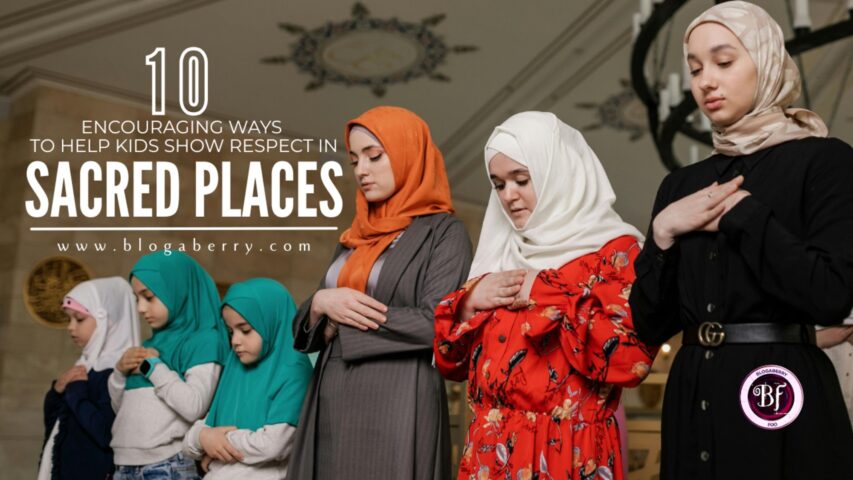
Off late, I’ve been seeing children running around in sacred places like it’s a playground. The parents’ excuse is that ‘they don’t listen’ or ‘they are small’ or ‘he/she is like that only’. Is that even a valid excuse? That’s your kid, parent! You have to discipline them and teach them what is wrong, don’t you think?
When we step into a sacred place, we’re entering a place of worship, reverence and communion with God. When your child is seen running around or shouting, it disturbs everyone around them. And as their parent, you are disrespecting the sanctity of the place of worship.
Children are small, duh! That is why it is we who have to teach them basic manners, what’s right and what a sacred place is. If you’re not sure how to go about it, here are a few encouraging ways to help kids show respect in sacred places.
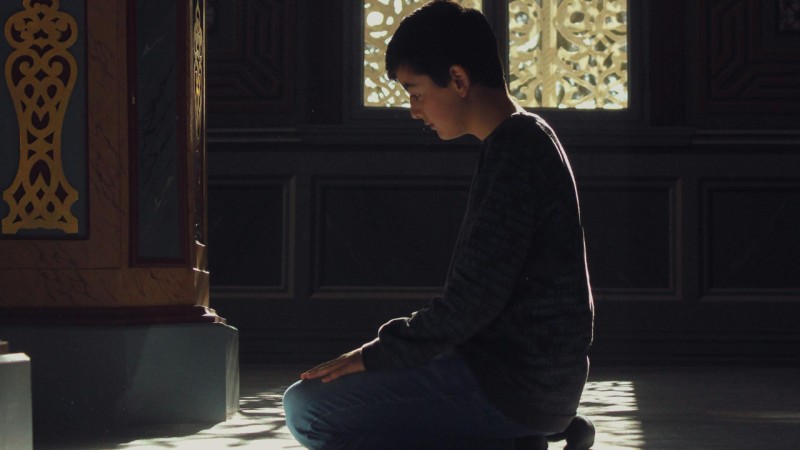
Firstly, try and arrive before the service is scheduled to begin. In case you are late, wait for a suitable time to enter and find a seat, preferably when the congregation is standing. Leaving early, especially before the final blessing, means missing out on graces. This can set a poor example for others, especially our children. Therefore, it is advisable to honour the fullness of the holy service, if attending one.
Chewing gum in a sacred place, especially during a holy service, is not appropriate. Make sure to spit it out before entering and let your kids do the same. Also, some religions, like Christianity, encourage fasting for at least one hour before receiving the body of Christ or the Eucharist. Keeping gum in our mouth while praying, is unmannerly, and while receiving Communion could lead to disrespectful accidents, such as unintentionally spitting out the consecrated host.
Once you enter a sacred place, please turn off your mobile phones and refrain from texting, checking social media or taking calls. This time is set aside for prayer and reflection, and digital distractions can disrupt not only your own focus but also others’ experiences. If you’re expecting an urgent call, it’s best to consider entering the sacred place at another time as children learn by example.
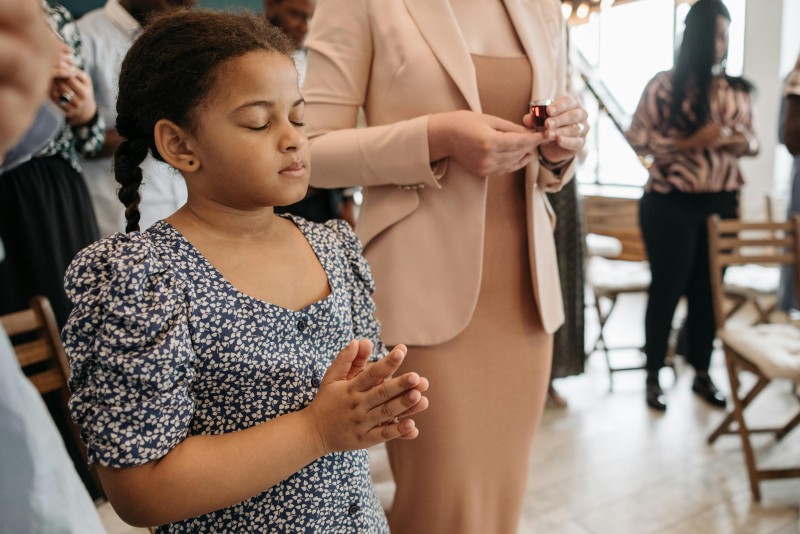
When you plan to visit a sacred place, for the service or as a tourist attraction, make sure to dress modestly. Avoid revealing clothing, loud t-shirts, visible undergarments or overly casual outfits. We must teach our children that dressing appropriately for sacred places is part of honouring God and respecting the divine space.
When in Singapore, we randomly visited a monastery amid Chinatown. They handed over to me a long wrap-around skirt to wear before I entered the sacred place. Check what I was wearing here.
Everyone gets thirsty after some time. But, as an adult, you should refrain from drinking (even water) inside a sacred place, especially during a holy service. If medication is necessary, it’s respectful to step outside the sanctuary to do the needful.
My kids are not allowed to take their toys outside the house. If, by chance, they do, everything has to be left in the car before they get out of it. I believe that kids should experience the outside world and inhale nature. So, when I take them to Church, taking toys there is out of the question.
Talk to your child and let them understand that taking toys, food or electronic devices like tablets or gaming consoles to sacred places can be distracting for them, you as well as others around. Being in a sacred place is a great opportunity to help our kids learn to detach from other things and focus on God, even in some small, age-appropriate ways.

When my kids were tiny, I would only tell them when to sit, stand, kneel and pay attention. Their tiny minds couldn’t grasp the prayers back then. Now, they recite some of the prayers, too.
As parents, we can play a vital role in helping our children learn gratitude, self-control and awareness of God’s presence on the altar.
Unless really necessary, avoid having side conversations with kids or adults. Whispering, chatting or giggling breaks the sacred rhythm of the holy service which is like a spiritual symphony, something to be absorbed in silence.
The only conversation you should have is with God.
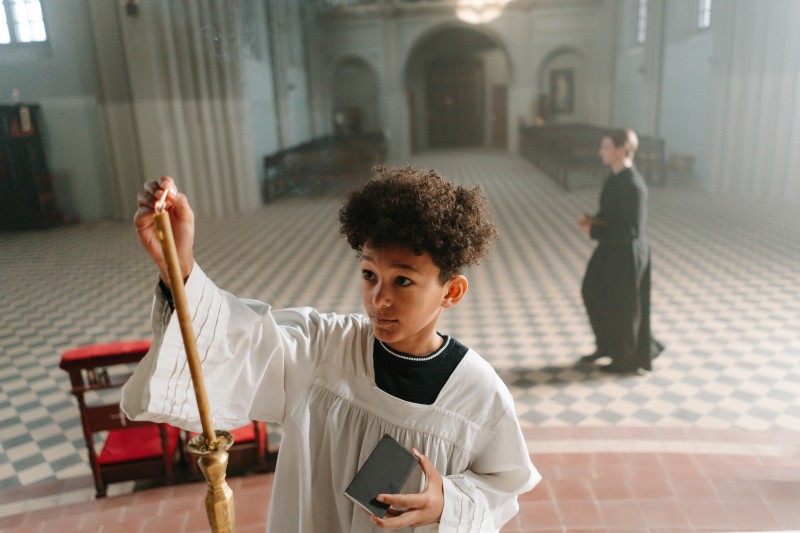
In many faith traditions, the altar is considered the most sacred part of the worship space. Removing shoes is a humble acknowledgement that you’re stepping onto holy ground, just as Moses did when God asked him to take off his sandals at the burning bush.
For some reason, if you need to be near the altar, whether it’s to assist during a service, light a candle, make an offering or participate in a ritual, please remove your footwear as a sign of respect. Your kids will automatically follow suit.
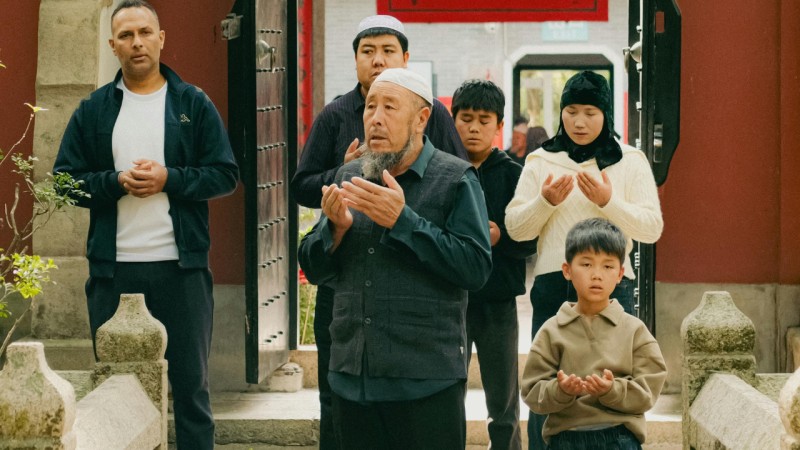
When we attend a holy service, we should remember that we haven’t gone there to ‘watch’ but to participate. Join in the prayers, responses and hymns. The more involved we are, the more spiritually fulfilling the experience becomes, for us and our family.
If we are only visiting, quietly closing our eyes can set a good example for the kids watching us.
Sacred places are not just structures, they are spaces of deep reverence, reflection and spiritual connection. If your baby is constantly crying, take them out of the place of worship. Fresh air could help calm them down. When we bring our children into these environments, we’re also bringing them into a relationship with faith, values and tradition. Teaching them how to behave respectfully isn’t about strictness, it’s about cultivating awareness, discipline and mindfulness from a young age.
Remember, our children learn by watching us. When we model veneration, participation and restraint, we plant seeds of respect that will grow with them throughout their lives. So the next time you step into a house of worship, guide your child, not just physically, but spiritually too.
Let’s raise children who don’t just visit sacred spaces, but truly honour them.

Images courtesy: Pavel Danilyuk, Guruh Budi, Aziza Mohammed, Alena Darmel, Furkan Dil, cottonbro studio.
This blog post is part of ‘Blogaberry Dazzle’
hosted by Cindy D’Silva and Noor Anand Chawla.
You are invited to the Inlinkz link party!
Click here to enter
32 Comments
These are all wonderful tips!
I loved your post—it resonated deeply. As a parent, I’ve reminded my kids to pause before entering worship, put away phones, and use quiet voices. Your tips feel both respectful and empowering.
Thank you, Jeannine!
I love your thoughts on how to guide kids in sacred places. Sometimes, small deeds go a long way, right? I learnt how to “behave” in a Gurudwara when I first went to one in our Unit mandir and also in the Golden Temple. It is important to learn the customs and be respectful in such places.
Thanks, Shalini!
This is such an important and thoughtful post. I completely agree that kids need gentle guidance to understand the value of sacred spaces. It really does start with us as parents. Loved the practical tips, especially about leading by example.
A very important lesson every parent must teach children. Basic manners for disciplined actions needs to be taught earlier
Children learn from example so what we do is important too. I believe it isn’t wrong to mind them, and tell them that a religious places must be treated with respect.
Such practical, kid‑friendly strategies, Cindy. For instance, explaining sacred etiquette beforehand and role‑playing scenarios—so children understand respectfully rather than just obey. These are the little things that help kids learn respect with empathy and sets a foundation they’ll carry forward.
Thanks, Manali!
Makes perfect sense to leave toys and snacks behind ; children learn best by seeing our example as it has been well said that the charity begins at home.
So true, Swati!
Very very powerful and important post you shared Cindy. I am surprised to see people fighting, baby crying and mother consoling, and yes drinking water too… well in heavy summer all feel thirsty and one see other drinking water the urge to have water psychologically impact and they also look for water or ask to share, people talk discussing family matters and what not. Either I dont take my son when I visit such place or guide him how to behave there if he really wants to go. When I do puja at home I take him by my side and by now he understood how to offer prayers. I am trying my side and hope he will follow the same in every public sacred place.
It’s a thoughtful guide for parents on instilling reverence, manners, and mindfulness during worship, ensuring a peaceful and respectful environment for all.
Much needed post, Cindy. Teaching them young is the only way they will grow into these habits. Helpful and practical tips.
This blog was the need of the hour. Specially my nephew almost does everything that shouldn’t be done. But with this informative piece I feel I’ll be more careful in advance!
Lovely read, Cindy! I especially appreciate the gentle, practical tips…your storytelling idea about “what a sacred space feels like” is a totally golden nugget of cultural parenting wisdom
These are some excellent practices that will help raise responsible kids. Thankfully, I have 2 daughters, and girls are sort of more obedient. They just need to wait patiently while visiting a religious place.
This is a much-needed and useful guide for parents. I have observed kids and even the elders, along with them, behave very weirdly sometimes in religious places, especially while standing in the queues.
Yeah, sadly, I’ve seen that, too, Reubenna!
It is a very thoughtful and well-written blog. With kids being negligent these days, it is a must for parents to address this topic for their kids and this blog can help them do it well.
Such a relevant article. I feel sad when in today’s world, interference in other’s faith seems to be the order of the day. I feel that comes from a state of false superiority rather than true belief. Live and let live doesn’t seem to rule our world anymore.
Though a practicing Hindu, I am proud to have been to Gurdudwaras, churches, mosques and each and every place I have been to, I followed what is proscribed and my children too continue to do the same. I think that came from my parents who at the dinner table spoke about how each and every religion teaches only goodness and the need to respect all faiths.
True, Chandrika! Showing Respect starts from home.
Really important topic, Cindy. Sacred places should always be treated with respect, no matter what faith they belong to. It’s important for everyone to stay calm and behave properly when they visit. And kids, of course, learn by watching us, so the way we act sets an example for them. Thanks for bringing this up.
Glad this makes sense, Anjali!
It truely elder generation’s responsibility to show ways to behave in such places. You have given really good points about this…
Very vital lessons in public behaviour and sacred sites. These little things make so much of a difference later in life. I don’t recall going to any temple with my parents at a young age. I only started going close to my 30s, and it’s been quite an education of understanding the space. It’s good you’ve been teaching your kids from an early age to respect certain spaces.
I think showing reverence to any place of worship whether it is your own religion or whether it is a religion you do not follow is a sign of tolerance and an open mindview. I follow Hinduism and we have our own set of rules to follow but the rules you have mentioned can be followed by all except maybe not necessarily pray but showing reverence is important if you enter a place by your own will.
It’s truly important to teach children about our faith and respectful behavior in sacred places, and I’m glad you’ve highlighted it. Children learn best by observing the adults around them. It’s a beautiful reminder for us to be mindful of our own actions too.
Though this article says sacred places, it talks mostly about churches and services. Yes, it’s true that different religions have different customs to be followed at their sacred places, and we must respect that. For instance, when we went to the Golden Temple, we were asked to cover our heads. I think if we as adults follow, children will too. I have seens many adults taking pics, talking on the phones, and dressing immodestly when they visit temples; one has to be careful to void these.
True, Janaki. I’ve written this according to my views and knowledge about other sacred places too. Of course, I know about the Church more than about the others. But all of it applies to all religious places, right?
I don’t visit any religious place but I have heard how kids dont behave properly and parents give lame excuses for their behaviour. This post is very helpful for parents looking to raise kids who are not just mindful but also respectful, especially when it comes to sacred spaces.